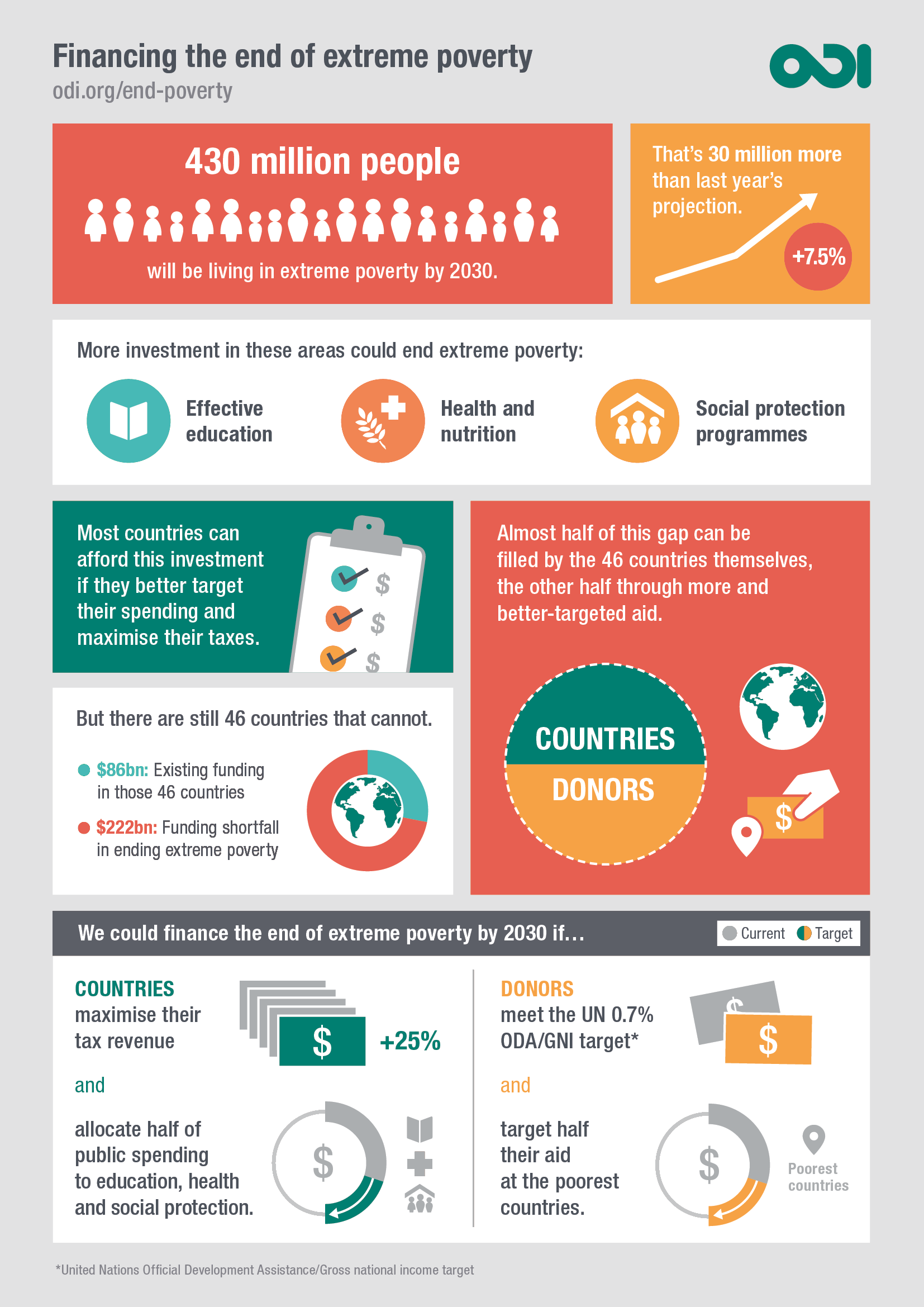430 million people will be living in extreme poverty by 2030, despite economic growth reducing poverty by one-third. This is 30 million more people than the Overseas Development Institute's 2018 assessment, and means the world is significantly off track to achieve the first Sustainable Development Goal. Most countries can afford the investment to end extreme poverty on their own, but there are still 46 countries that face a £222 billion funding shortfall in doing so. This research finds that both donors and countries have a part to play in financing the end of extreme poverty.
The report recommends that:
The least developed countries (LDCs) need to:
increase their tax revenues by a quarter (to the maximum level that is economically feasible)
allocate half of their public spending to health, education and social protection.
Development Assistance Committee (DAC) donors need to:
double their collective aid, with all donors meeting the 0.7% UN target
double the share of their collective aid given to the least developed countries from one-quarter to a half
press all multilateral agencies with a global reach to provide at least half of their support to the poorest countries.
Note on methodology: This briefing note uses the same methodology as ODI’s 2018 report. The only change being that poverty projections assume previous trends in inequality will continue.
The 2019 briefing note uses updated data for GDP, GNI, population, poverty, tax revenue and aid; costs for education and health updated for inflation; costs for social protection updated for inflation as well as the latest poverty headcounts and gaps; and the latest World Bank definitions of low- and middle-income countries. LDC membership and the Organisation for Economic Co-operation and Development fragile state list remain unchanged.
It also extends analysis to government spending (disaggregated by sector) and scoring of multilateral agencies’ efficiency at targeting extreme poverty.



